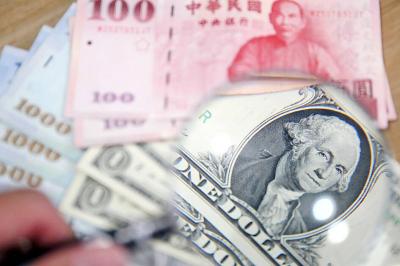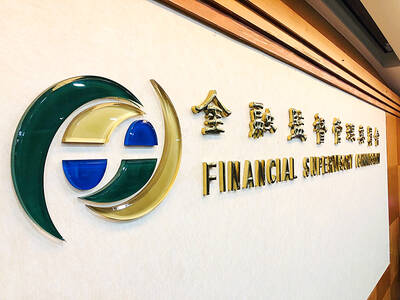Acer Inc (
"This is the first IC-design research and development center in Taiwan," Acer president Stan Shih (
The US partner, Cadence Design Systems Inc, has also invested in a similar venture in China.
The new IC design institute, housed in Acer's Aspire Research Complex that was opened in August, is expected to train around 200 graduate students next year. The first class starts in January, and is already almost full. While both Shih and Cadence's president Ray Bingham stressed that graduates of the programs were not under any obligation to work for either company, analysts have suggested they might offer incentives to bag the best talent.
Cadence in particular will need the new talent. Its Taiwan operation is already having difficulty recruiting engineers with analog experience.
"We are finding it hard to find engineers," said Al Feng (
Because of a lack of expertise, he said, Cadence had to train many of the engineers it recruited in analog technology.
The school will draw electronic engineering graduates and also experienced IC design engineers, software developers and system designers.
The academic credentials students receive have yet to be decided, but instructors are to come from Hsinchu's National Chiao Tung University and the government-funded Industrial Technology Research Institute.
Cadence will provide foreign educators, field assistant engineers, software and materials for courses, and Acer will provide the facilities and the hardware.
Demand for mixed-signal chips, which combine both digital and analog features, is expected to increase dramatically over the next four years, researchers said.
In order to communicate with each other and the Internet, mobile phones, personal organizers and laptop computers need analog features in their component chips. Now at 20 percent, the proportion of mixed-signal chips will rise to over 70 percent in 2006, according to Gartner Group.
Cadence designs 80 percent of the world's mixed-signal chips. A worldwide shortage of combined digital and analog engineering talent puts the complex in a unique market position.
"This is a classic bottleneck," Bingham said. "The opportunity we are trying to create today will have a direct impact on the lives of students interested in this field and the businesses that will grow as a result."
US-based high-tech companies have long looked to Taiwan's talent pool.
"I am concerned that the US can't catch up in chip design. I have worked in both China and Taiwan and I'm impressed with the focus both countries are bringing to IC design," Bingham said.
Taiwan recognized the need for engineering talent in the 1980s and invested in tech education.
"Taiwan has gone from a position of following the US and Europe to a position of leadership," Bingham said. "This is because of education."
Decrying the state of engineering education in the US as "a pitiful story," Bingham said that China was producing 600,000 engineers each year, with 200,000 of those graduating in computer science and electronic engineering. In the US this figure is only 80,000, and a majority of them are foreign students.
Facing the hollowing out of the local manufacturing base, the government has been urging the IT industry to team up with foreign companies to improve their research and development capabilities. Taiwan lacks sufficient high-tech professionals and the government has charged the institute with the task of setting up a series of programs to produce up to 50,000 high-tech experts by 2006.

The US dollar was trading at NT$29.7 at 10am today on the Taipei Foreign Exchange, as the New Taiwan dollar gained NT$1.364 from the previous close last week. The NT dollar continued to rise today, after surging 3.07 percent on Friday. After opening at NT$30.91, the NT dollar gained more than NT$1 in just 15 minutes, briefly passing the NT$30 mark. Before the US Department of the Treasury's semi-annual currency report came out, expectations that the NT dollar would keep rising were already building. The NT dollar on Friday closed at NT$31.064, up by NT$0.953 — a 3.07 percent single-day gain. Today,

‘SHORT TERM’: The local currency would likely remain strong in the near term, driven by anticipated US trade pressure, capital inflows and expectations of a US Fed rate cut The US dollar is expected to fall below NT$30 in the near term, as traders anticipate increased pressure from Washington for Taiwan to allow the New Taiwan dollar to appreciate, Cathay United Bank (國泰世華銀行) chief economist Lin Chi-chao (林啟超) said. Following a sharp drop in the greenback against the NT dollar on Friday, Lin told the Central News Agency that the local currency is likely to remain strong in the short term, driven in part by market psychology surrounding anticipated US policy pressure. On Friday, the US dollar fell NT$0.953, or 3.07 percent, closing at NT$31.064 — its lowest level since Jan.

The New Taiwan dollar and Taiwanese stocks surged on signs that trade tensions between the world’s top two economies might start easing and as US tech earnings boosted the outlook of the nation’s semiconductor exports. The NT dollar strengthened as much as 3.8 percent versus the US dollar to 30.815, the biggest intraday gain since January 2011, closing at NT$31.064. The benchmark TAIEX jumped 2.73 percent to outperform the region’s equity gauges. Outlook for global trade improved after China said it is assessing possible trade talks with the US, providing a boost for the nation’s currency and shares. As the NT dollar

The Financial Supervisory Commission (FSC) yesterday met with some of the nation’s largest insurance companies as a skyrocketing New Taiwan dollar piles pressure on their hundreds of billions of dollars in US bond investments. The commission has asked some life insurance firms, among the biggest Asian holders of US debt, to discuss how the rapidly strengthening NT dollar has impacted their operations, people familiar with the matter said. The meeting took place as the NT dollar jumped as much as 5 percent yesterday, its biggest intraday gain in more than three decades. The local currency surged as exporters rushed to